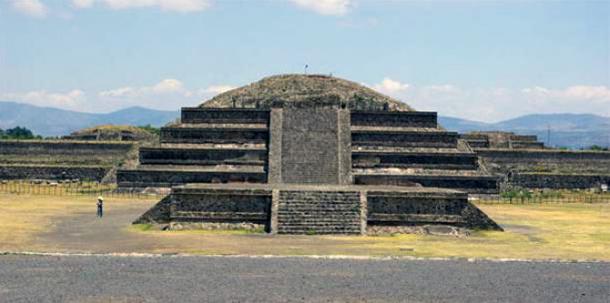April, 2015 - 20:55 aprilholloway
River of Mercury in Underworld of Pyramid of Quetzalcoatl may lead to Royal Tomb
(Read the article on one page)
Archaeologists believe that a recent discovery of liquid mercury in a subterranean tunnel beneath the Temple of the Feathered Serpent in Teotihuacan, Mexico, may represent an underworld river that leads the way to a Royal tomb or tombs. The remains of the kings of Teotihuacan, some of the most powerful rulers of the pre-Hispanic world, have never been found. Such a discovery would be monumental as it would unravel many of the mysteries surrounding this ancient civilization.
The ancient city of Teotihuacan, which is located about 30 miles (50 km) northeast of Mexico city, flourished between 100 BC and 750 AD and is one of the largest and most important sacred cities of ancient Mesoamerica, whose name means "the city of the gods" in the Nahuatl language of the Aztecs. It once supported an estimated population of 100,000 – 200,000 people, who raised giant monuments such as the Temple of Quetzalcoatl (Feathered Serpent) and the Pyramids of the Sun and the Moon. However, much about Teotihuacan remains unknown, including the origin of the people who lived there, as they did not leave behind any written records.

The ancient city of Teotihuacan, which is located about 30 miles (50 km) northeast of Mexico city, flourished between 100 BC and 750 AD and is one of the largest and most important sacred cities of ancient Mesoamerica, whose name means "the city of the gods" in the Nahuatl language of the Aztecs. It once supported an estimated population of 100,000 – 200,000 people, who raised giant monuments such as the Temple of Quetzalcoatl (Feathered Serpent) and the Pyramids of the Sun and the Moon. However, much about Teotihuacan remains unknown, including the origin of the people who lived there, as they did not leave behind any written records.
- Wireless Robot discovers three chamber in Teotihuacan
- The Temple of the Feathered Serpent and the gold-colored spheres

Temple of the Feathered Serpent. Photo credit: Wikipedia

No comments:
Post a Comment